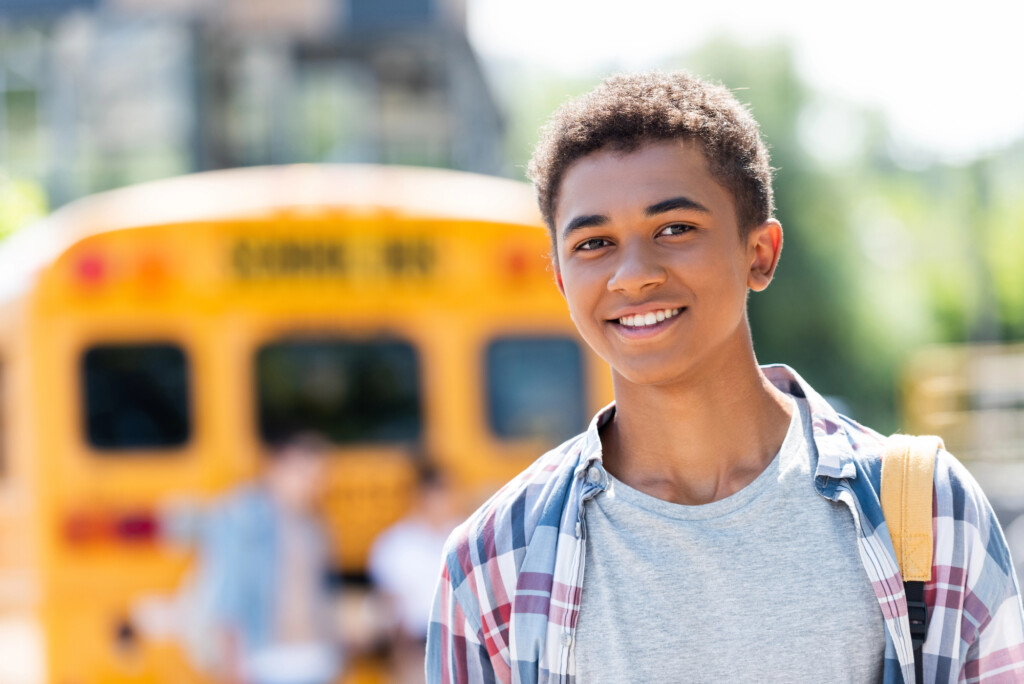In the whirlwind of adolescence, when newfound freedom often intersects with impulsive decisions, accidents can happen. While accidents are unpredictable, we can equip teens with the skills and knowledge to handle these situations calmly and effectively.
Equipping young adults with essential guidelines instills confidence and preparedness, helping them effectively handle unforeseen circumstances and reduce potential consequences.
So, let’s discuss essential steps teens should take after accidents, whether it’s a minor fender bender or a serious collision.
Ensuring Safety by Moving to a Secure Location
The first priority after an accident is to ensure the safety of yourself and others involved. If possible, move your vehicle and any injured individuals to a safe location away from oncoming traffic and avoid secondary accidents. Many secondary accidents occur when stationary or obstructing vehicles remain at the scene of the initial incident.
Research by the US Department of Transportation found that crash data from 10 states identified 52,000 crashes as secondary. These incidents occurred at the scene of initial accidents. This figure represents about 1% of total crashes during the same period across those states.
If the vehicle is drivable and obstructing traffic, move it carefully to a safe location like a shoulder or parking lot. If the car is immobile, teens should turn on hazard lights, stay buckled inside, and wait safely for help. Exiting the vehicle on busy roads can be risky, so they should prioritize staying visible and safe.
Calling Emergency Services Immediately
One of the most critical steps after an accident is calling emergency services without delay. Teens should be taught to dial 911 as soon as they ensure their immediate safety. Even if the accident seems minor, it’s essential to report it, as injuries or damages may not always be visible right away.
Studies from the National Safety Council (NSC) show that nearly 5.2 million motor vehicle injuries occurred in 2022. Delays in emergency response could have worsened injuries or led to further complications. Proper education on emergency communication ensures teens handle accidents responsibly until help arrives.
Teens should clearly state their location, describe the accident, and mention any known injuries when speaking to the dispatcher. This helps ensure the appropriate help is sent quickly. Promptly involving emergency responders allows medical assistance, law enforcement, and other personnel to manage the situation effectively.
What should they do if they are unable to call emergency services?
If teens cannot call emergency services, they should signal for help by turning on hazard lights, raising the hood, or using flares if available. They should stay in a safe location and flag down passing drivers. Alternatively, they can ask a bystander to call for help.
Exchanging Information with the Other Party
Once you’ve confirmed everyone’s safety and alerted emergency services, it’s crucial to share information with the other driver engaged in the mishap. This information typically includes personal details like names, contact numbers, residential addresses, insurance, and licensing information. To avoid potential complications with insurance claims, teens should remain calm and courteous, refraining from admitting fault.
A significant number of US drivers, approximately 14%, are uninsured, as reported by the Insurance Information Institute (III). This highlights the importance of gathering accurate information to file claims efficiently. Teaching teens these steps ensures they handle post-accident procedures responsibly and protect their interests.
What steps should they take if the other driver is unwilling to provide their details?
If the other person is uncooperative, teens should stay calm and avoid any arguments. It’s important to note down the vehicle’s details, including its number plate, model, and make. Immediately inform the police and provide all gathered information to ensure proper handling of the situation.
Documenting the Accident Scene
To ensure a smooth insurance claim process and potential legal proceedings, it’s vital to document the accident scene comprehensively. Teens should use their smartphones to capture clear photos of vehicle damage, license plates, accident locations, road conditions, and injuries. Capturing multiple angles ensures a comprehensive record of the incident.
Also, they should jot down details like the time, date, weather, and any witness contact information. Accurate documentation helps establish facts and clarify responsibility, reducing disputes during insurance claims or legal proceedings.
Knowing When to Contact a Personal Injury Lawyer
In some accidents, the consequences go beyond vehicle damage or minor injuries, resulting in long-term medical expenses, emotional distress, or financial losses. Teens and their families should know when to seek professional legal help, particularly in cases with severe injuries or unclear faults. Legal assistance is also crucial when facing insurance disputes or complications.
The Gazette reported that in Colorado Springs, on 2nd December 2024, a 15-year-old hit-and-run victim remains hospitalized following a crash on 7th September. The boy sustained brain injuries, skull and facial fractures, and a broken pelvis when hit by a car drifting nearby. Police are still searching for the unidentified suspect, and the family is seeking assistance.
In such accidents, consulting a local legal professional can be essential to protecting one’s rights and securing fair compensation. A Colorado Springs personal injury attorney offers expert guidance, assesses the case, and negotiates or takes legal action if necessary. A regional legal professional has the experience to navigate complex claims and ensure victims receive the support they deserve.
Springs Law Group advises that having an attorney represent you during insurance negotiations helps avoid delays and low offers. Insurance companies often engage in tactics that hinder fair settlements, making legal representation crucial. If the case goes to trial, a personal injury lawyer’s expertise in procedural and legal matters ensures the best possible outcome.
What qualities should teens and parents consider when selecting a personal injury lawyer?
When selecting a personal injury lawyer, teens and parents should prioritize experience with similar cases and positive client reviews. To ensure optimal representation, select a lawyer who excels in clear communication and provides free initial consultations. Furthermore, prioritize a lawyer who operates on a contingency fee basis, guaranteeing no upfront costs and payment only upon a successful case outcome.
Mistakes to Avoid After an Accident
Knowing what to avoid after a mishap is equally important as knowing the correct steps to take. Teens should avoid admitting fault, even unintentionally, as this can complicate insurance claims or legal proceedings. They should avoid arguing with the other party or posting about the accident on social media, as it may be used against them.
Leaving the scene before authorities arrive is illegal and can lead to serious penalties. Teaching teens what not to do ensures they protect themselves and follow the law.
Notifying Parents or Guardians Right Away
After an accident, teens should immediately notify their parents or guardians, regardless of the severity. Parents can provide emotional support and help guide them on what to do next, like contacting the insurance company or seeking medical attention. Having a trusted adult involved ensures that the teen makes informed decisions and remains calm during a stressful situation.
Parents can also assist in gathering necessary documentation or seeking legal advice if needed.
Empowering Teens for Safer, Smarter Decisions
Teaching teens the right actions to take after an accident is essential for their safety, legal protection, and emotional well-being. By focusing on the steps outlined above, teens can approach these stressful situations with greater confidence and responsibility. Equipping them with the knowledge helps prevent mistakes that could lead to further complications.
With proper guidance, teens can navigate the aftermath of an accident clearly, ensuring they’re ready for any challenges.



